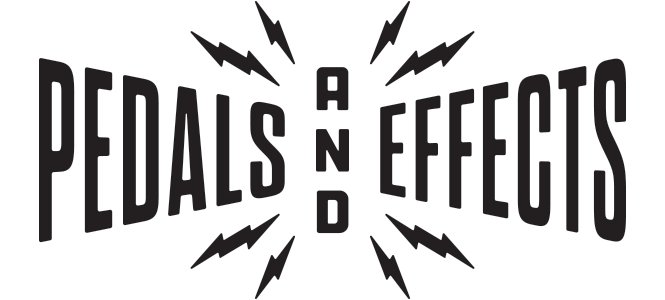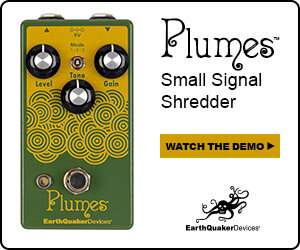The Pedals and Effects 5 with Aurielle Zeitler of Ghost Marrow and Chelsea Wolfe
/(5 questions we ask artists – the same 5, every time)
Today’s entry for the Pedals and Effects 5 spotlights guitarist Aurielle Zeitler! Zeitler, a multi-instrumentalist and self proclaimed synth enthusiast, has played in a diverse range of bands including, but not limited to, Two Sheds, Giant Squid and her own solo endeavors under the name Ghost Marrow. Currently, Zeitler plays lead guitar with Chelsea Wolfe and is currently on tour in support of Wolfe’s album Abyss.
1. What is your number one/go-to pedal on your pedalboard and why?
I’m surely not a well-versed pedal nerd, but my honest answer would be my Dunlop volume pedal. I spend more than half the set with my foot on this pedal when I perform with Chelsea Wolfe. I’m able to add so much more feel and emotion to everything I play by just tweaking the way I swell in on a chord; or by exaggerating or dampening certain notes within a melody line. Also, depending on where you have it in your signal chain, you can use it to effect the tonality of other pedals after it in line, particularly delays, modulation and reverbs. I can’t express enough how much more meaningful of an experience I have playing guitar with a volume pedal on board!
2. What is your favorite combination of pedals? It can be a combination of 2 pedals or multiple pedals!
I’m really having a lot of fun combining the Earthquaker Devices Afterneath and Organizer in conjunction with an EBow. I’ve just discovered playing with an EBow this year and though I’m not generally into “gadgets,” throwing one of those super fun creatures together with those two pedals sounds like a haunting and menacing string section smothered in a dream sandwich.
3. When did you realize a pedal(s) could evolve your playing/sound and what pedal(s) was it?
The first time I played with a Red Panda Particle, I knew a door had been opened for my playing. Other than having a seemingly limitless combination of settings and fascinating sounds, there is a characteristic that this pedal can’t ever fully be commandeered. You have to just kind of allow it to be the wild beast that it is – I really found this liberating and I think it’s freed up my playing to have this guy on my board. It’s helped me let go of feeling a need to control every sound I make and just enjoy the unexpected. I use the reverse and pitch settings a lot right now and I’m really looking forward to digging into it’s other capabilities. This pedal will surely never leave my board.
4. In the future, what would you like to see pedal builders create (from scratch) or modify on an existing standard?
This surely may already exist (so please let me know if it does!) but I’ve got in mind an analog-style delay that has a lo-fi/degrade/decay/chaos switch that you can hold down to make your delay swell into a wall of sonic destruction when you need that sort of thing, and then return to a clean delay when you release the button. I think I’d use it a lot!
5. What advice can you give to musicians who are trying to expand their musical horizons with pedals and effects?
I’m so lucky to have access to so many pedals that I’ve really been able to cull my taste and what I’m using. That said, I’m always experimenting and changing things out to learn how to use different tones in various contexts – especially overdrives, fuzz and distortions, I’d say, since those are sometimes less apparent right off the bat. So I think my advice would be to go to a music store that carries a variety of pedals and try at least ten different overdrives, click back and forth between different ones, layer them, try to really hear the saturation, EQ differences, responsiveness to dynamics in your playing, etc. I’m still on the hunt for my perfect overdrive pedal that always makes my heart sing, so maybe that’s just where my head is. In any case, I do think it’s a helpful exercise in learning what you like and don’t and training your ears to tell the difference!
All photos by Nick Fancher










